We previously analyzed the first experiment in crafting a graphic novel for Gitcoin. In this article, we will explore some themes of our second attempt, titled The Nightmare of Moloch.
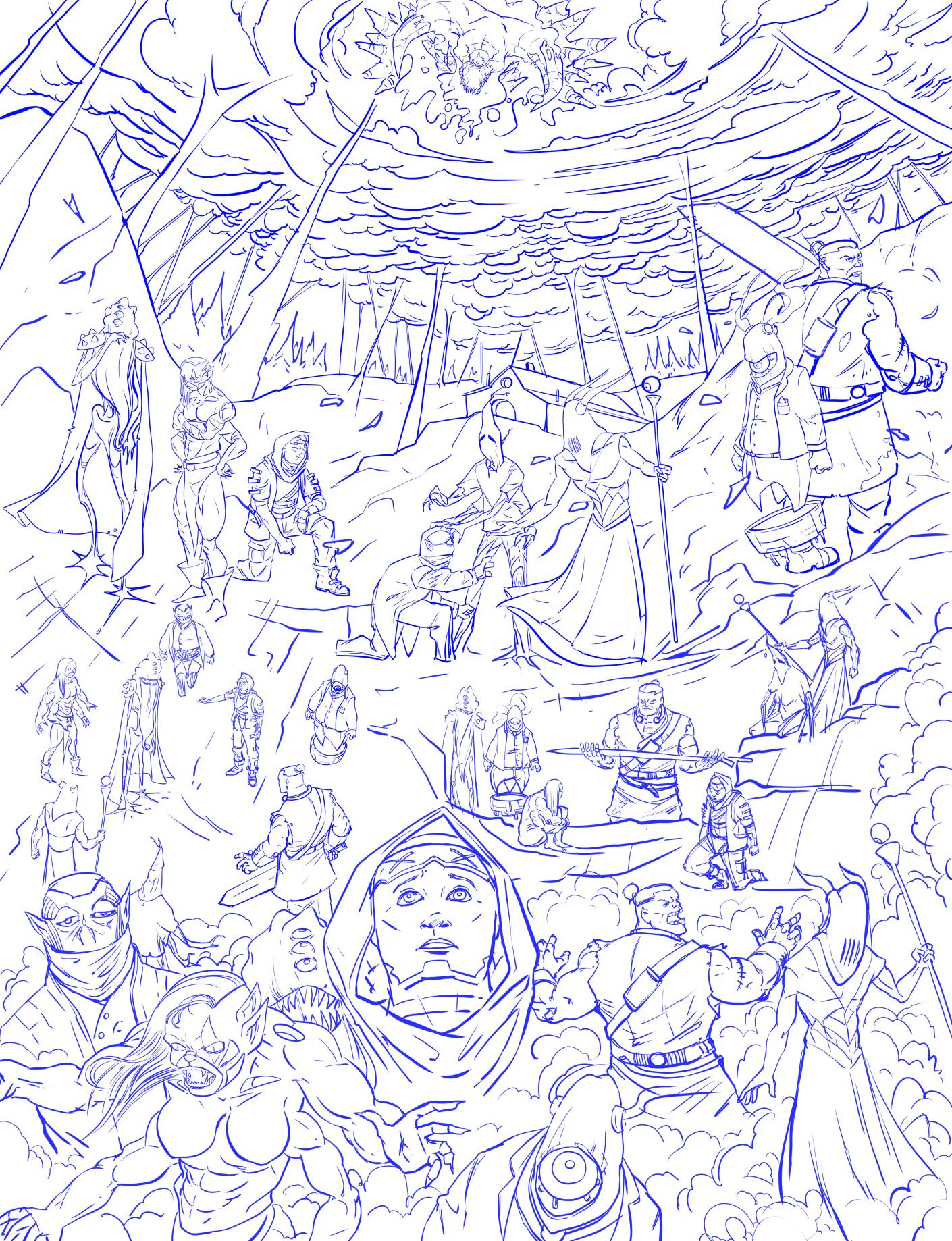
In the fields of narratology and comparative mythology, the hero's journey, or the monomyth, represents a prevalent pattern in narratives that encompass a protagonist embarking on an adventure, triumphing in a critical juncture, and returning home altered or transformed. Joseph Campbell employed the monomyth to scrutinize and juxtapose religious beliefs. In his renowned work, The Hero with a Thousand Faces, he delineates the narrative structure thusly:
A hero ventures forth from the world of common day into a region of supernatural wonder. Fabulous forces are there encountered and a decisive victory is won. The hero comes back from this mysterious adventure with the power to bestow boons on his fellow man.
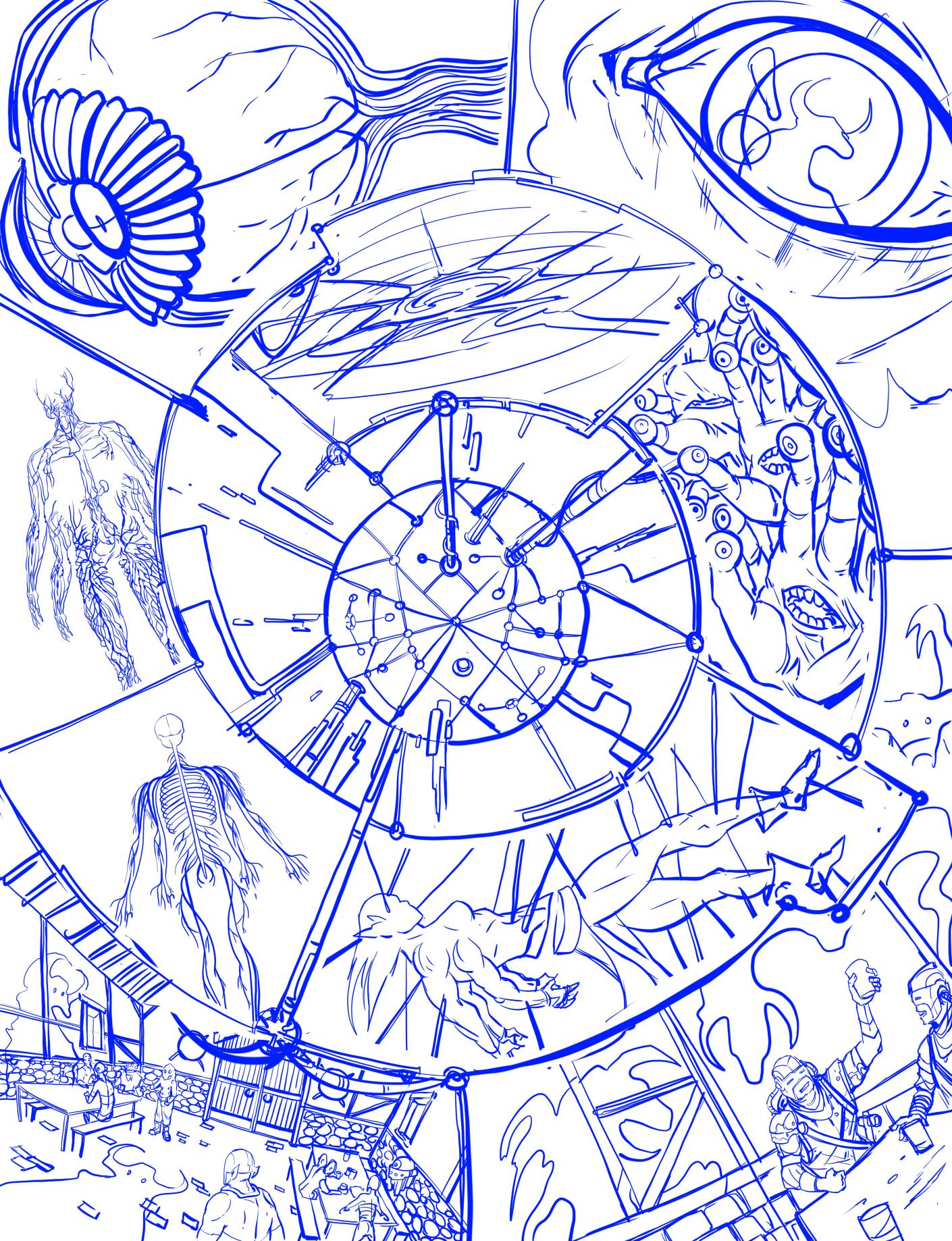
In contemporary analyses, the hero's journey has been scrutinized as a prime example of the sympathetic plot, a universal narrative scaffold wherein a goal-oriented protagonist faces hurdles, conquers them, and ultimately reaps the benefits. In the departure phase of the narrative, the protagonist dwells in the familiar, mundane world and receives a beckoning to set forth on a remarkable journey. As the initiation segment unfolds, the hero ventures across the boundary into an enigmatic or special world, where they grapple with formidable tasks or trials, either solitarily or bolstered by the assistance of steadfast companions. In due course, the hero reaches the innermost cave or the pivotal crisis of their odyssey, where they must withstand the ordeal by vanquishing the foe, undergoing apotheosis and rendering an epiphany, a keen insight into their own desires.
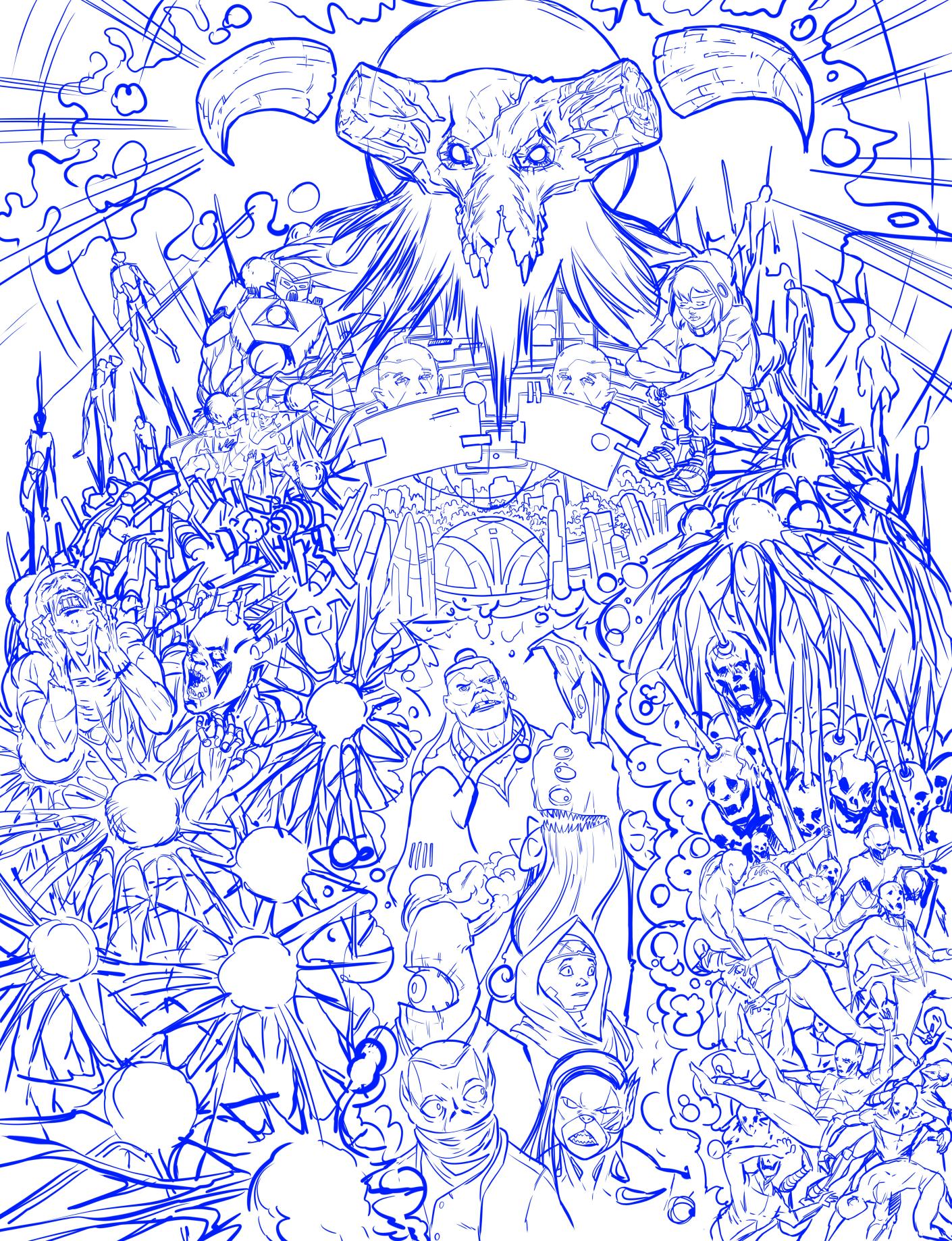
In the return phase, the hero is charged with reintegrating into the ordinary world, bearing the burden of their reward. They might be pursued by the protectors of the other dimension or demonstrate reluctance to return, necessitating an intervention from external forces. Once again, the hero navigates the liminal space between the realms, eventually rejoining the ordinary sphere, now ready to be harnessed for the greater good. Through this transformative journey, the hero emerges enlightened, wielding newfound wisdom or spiritual influence over both worlds.
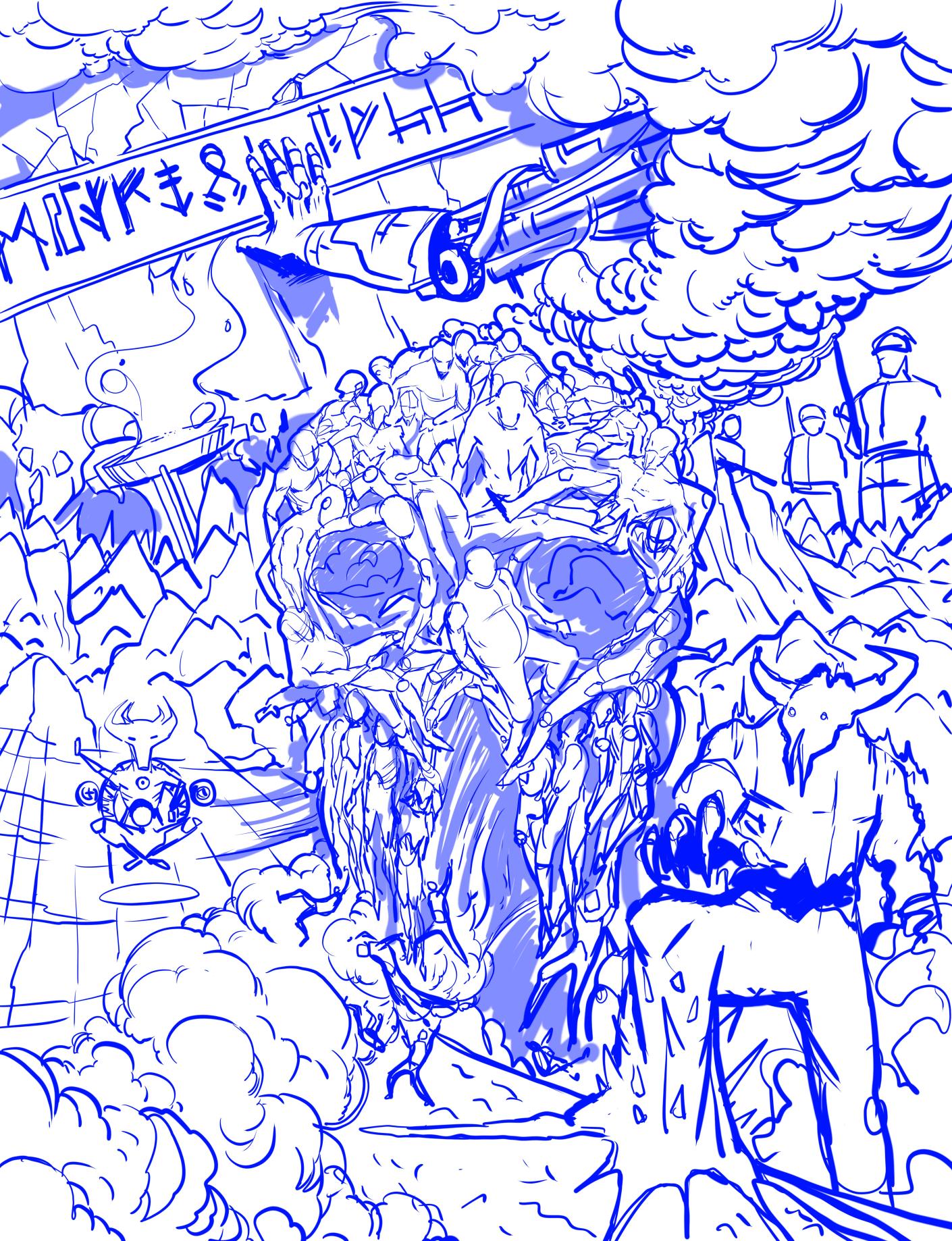
In our endeavors for Gitcoin's comic book series, we sought to intertwine the hero's journey with the concept of eternal recurrence, a cyclical process of world destruction and rebirth. The eternal return embodies a philosophical idea suggesting that time infinitely repeats itself in an endless loop, with identical events ceaselessly unfolding in precisely the same fashion, forevermore. In the annals of ancient Greece, the notion of eternal return was primarily associated with Stoicism, the intellectual school of thought founded by Zeno of Citium. Stoic philosophers posited that the cosmos is subject to regular annihilation and renewal, each subsequent universe serving as an exact replica of the one before. This doctrine was vehemently challenged by Christian writers, such as Augustine, who viewed it as an outright denial of free will and the possibility of salvation. As a result, the widespread dissemination of Christianity heralded the demise of classical theories centered on eternal return.
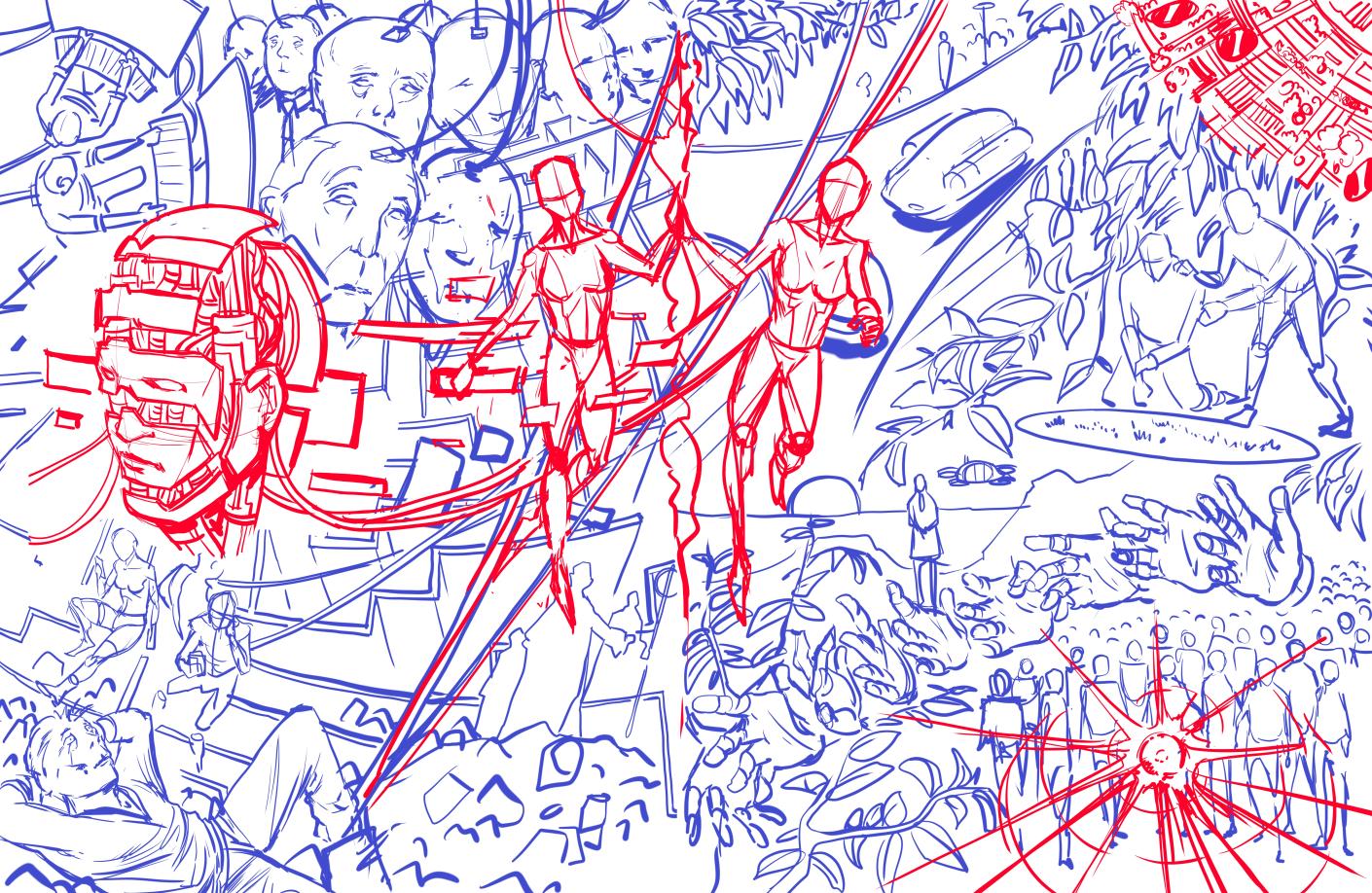
In the late 1800s, Friedrich Nietzsche breathed new life into this concept. First broaching the idea as a thought experiment in The Gay Science, he delved further into the subject in his novel Thus Spoke Zarathustra, where the protagonist learns to conquer his horror at the thought of eternal return: “the highest formula of a Yes-saying to life that can ever be attained.” It remains uncertain whether Nietzsche believed in the literal truth of eternal return or, if not, what he aimed to demonstrate through it, yet his vision is palpable.
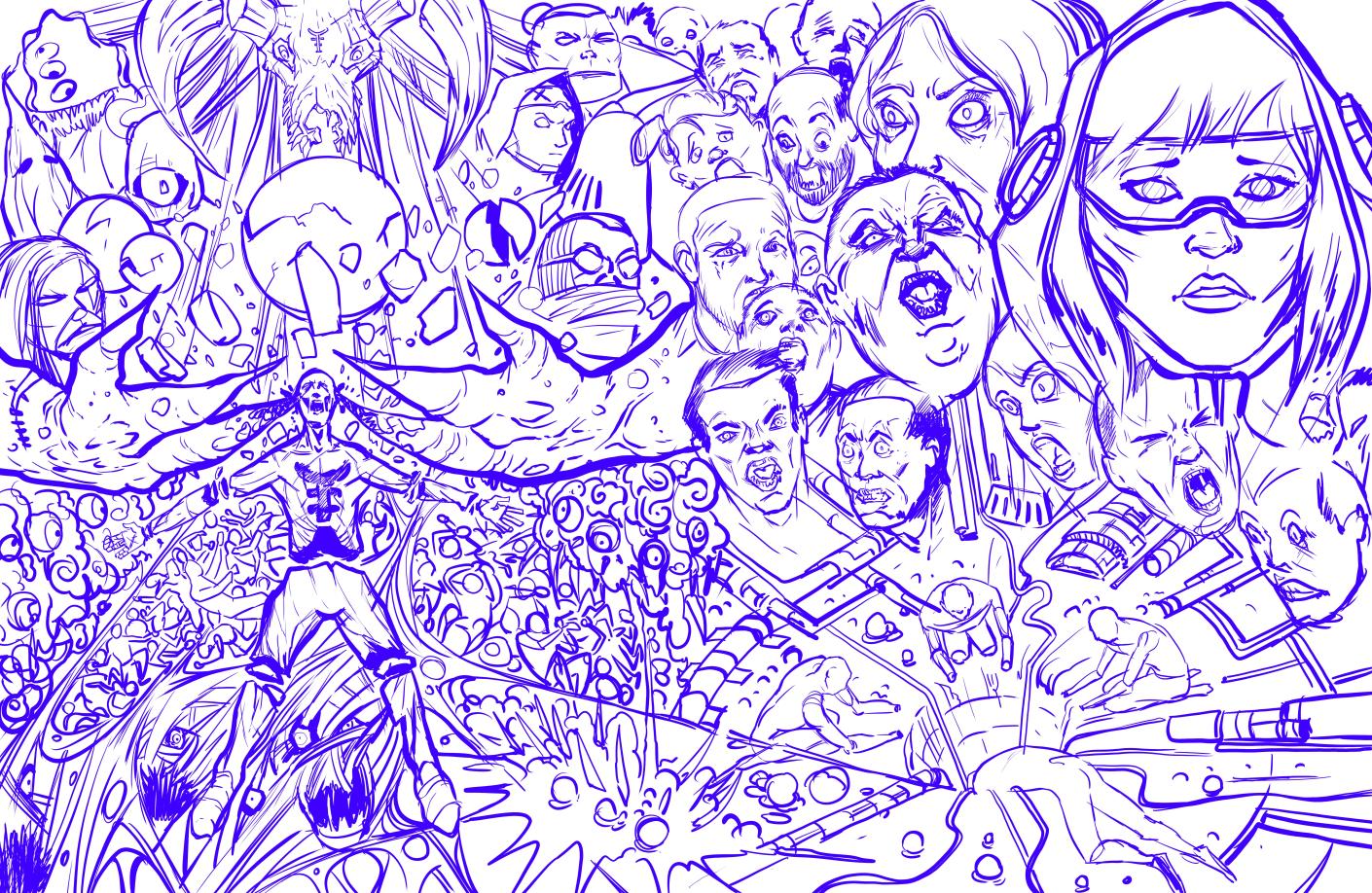
The greatest weight – What, if some day or night a demon were to steal after you into your loneliest loneliness and say to you: "This life as you now live it and have lived it, you will have to live once more and innumerable times more; and there will be nothing new in it, but every pain and every joy and every thought and sigh and everything unutterably small or great in your life will have to return to you, all in the same succession and sequence - even this spider and this moonlight between the trees, and even this moment and I myself. The eternal hourglass of existence is turned upside down again and again, and you with it, speck of dust!" Would you not throw yourself down and gnash your teeth and curse the demon who spoke thus?... Or how well disposed would you have to become to yourself and to life to crave nothing more fervently than this ultimate eternal confirmation and seal?
– Nietzsche, The Gay Science
Everything goes, everything returns, the wheel of existence rolls for ever. Everything dies, everything blossoms anew; the year of existence runs on forever. Everything breaks, everything is joined anew; the same house of existence builds itself forever. Everything departs, everything meets again; the ring of existence is true to itself for ever. Existence begins in every instant, the ball There rolls around every Here. The middle is everywhere. The path of eternity is crooked.
– Nietzsche, Thus Spoke Zarathustra
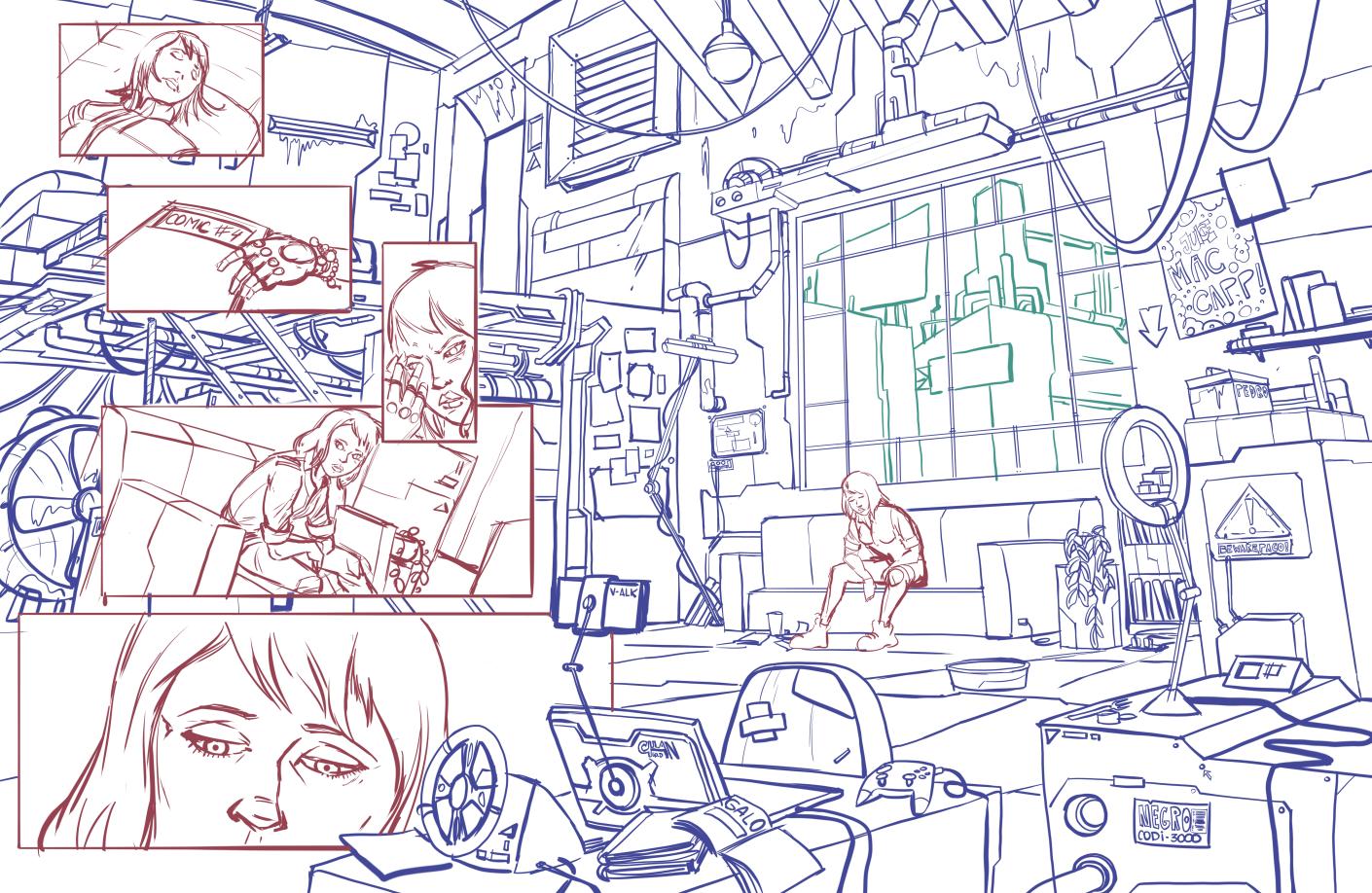
In The Nightmare of Moloch a pervasive, all-knowing narrator weaves its voice through the expressions of each character, probing the very bedrock of truth and reality while prophesying future events. The narrative delves into the intricacies of agency, fate, and decision-making, as well as the processes of envisioning and dismantling futures, positing critical embodiment as the linchpin for achieving emancipation, autonomy, and anonymity: freedom from the ever-returning turns of the eternal. Anon, our gentle protagonist, is haunted by past trauma and comes to understand the necessity of cultivating eye-hand-heart coordination to break free from this somnambulist horror. A miasmic Moloch permeates every facet of the tale, with the distinction between utopia and dystopia hinges on the balance between suffering and flourishing. In the denouement, Anon awakens to the possibility that she may be the author of her own story, as the unconscious embodiment of her own Molochian nightmare. The closing scene ties the end back to the beginning, using the cover design as a Möbius strip endless knot to loop the nightmare ad infinitum, ad absurdum. It’s a metaphor for crypto and for life in general: until one learns to break the cycle they are a prisoner, at least to themselves. “No one here gets out alive.”
And now, allow us to walk you through the second comic we made for Gitcoin that attempted to fold this meditation on Molochian delusions and prisoner’s dilemmas into an artful narrative.
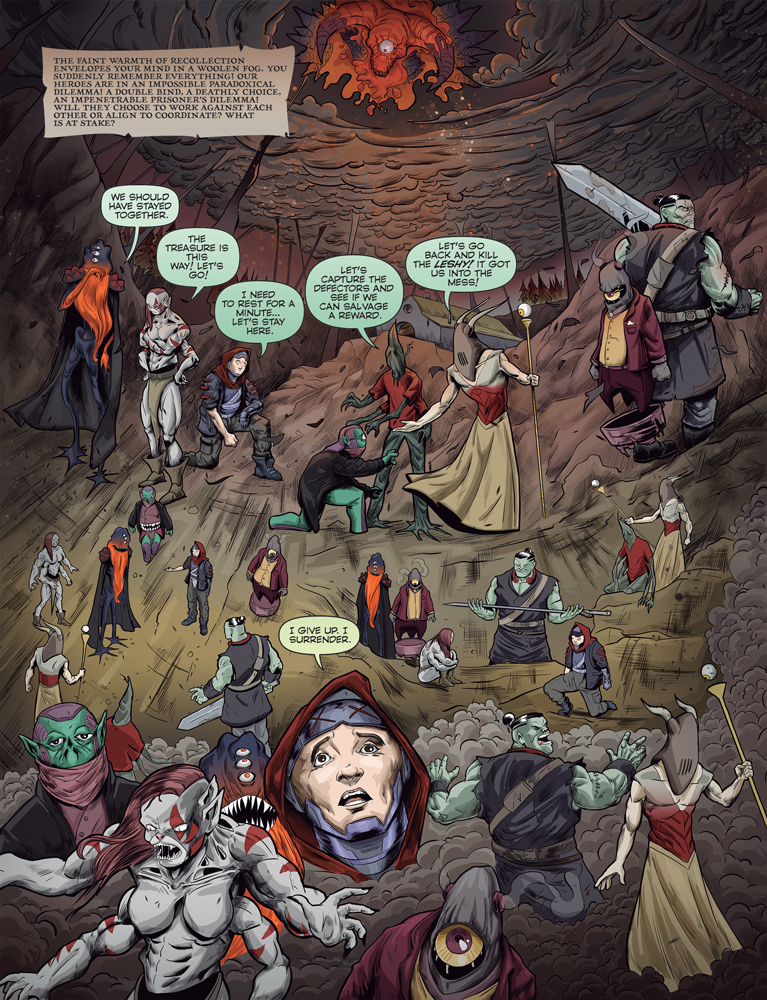
A spectral and intimidating Moloch forms the backdrop of the scene, setting an ominous tone. This opening page is fraught with tension, characters fueled by vague notions of hope and optimism that have dared to traverse the enigmatic portal, blinded by promises of fortune and glory, unaware of the sacrifices they might be making. Their faces etch out the complexity of the paradox they find themselves in. Amid this conflict, there's a burgeoning comprehension of the grander game at play, a crucial realization that their chosen paths, pitted against each other, will lead them nowhere, highlighting the futility of their opposition and sparking a surrender to the wider, unifying strategies proposed by cosmological game theory.
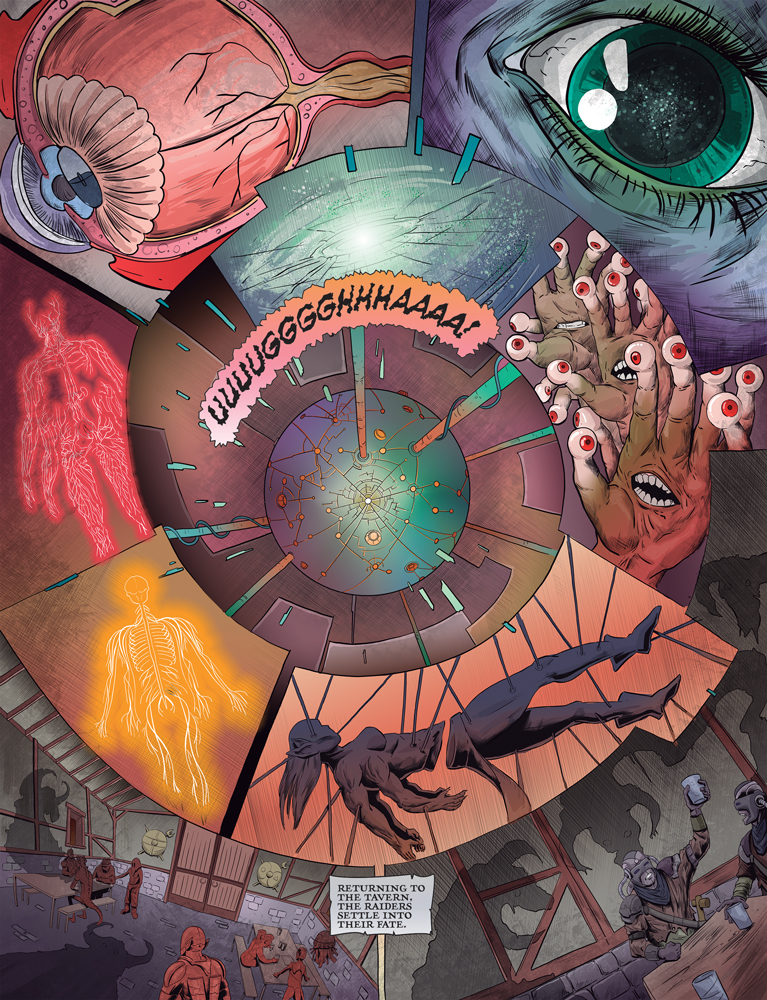
Just as the characters resolve to surrender to their fate, the narrative pivots, leading to an involution of aperture. The view starts pulling inward, a reverse zoom that distills the larger scene of the tavern into the microcosm of the human body. Shadows flicker against the walls, casting silhouettes shaped like ominous phantasms to imprint onto the characters' retinas, seeping deeper into their very beings. Moloch's image infiltrates the lymph system, permeates the sympathetic nervous system, manifests in the internal and external pressures felt by the characters. This deep dive into their physiological responses mirrors their psychological state, their eye-hand-heart coordination reflecting a unity of thought, feeling, and action. An extreme oscillation of scale highlights the vastness and minuteness of existence simultaneously, unfurling the universe as an ever-filling void. The page culminates in an abstract symbolic representation of the Ethereum network's global reach - a vast interconnected web that binds everyone and everything together.
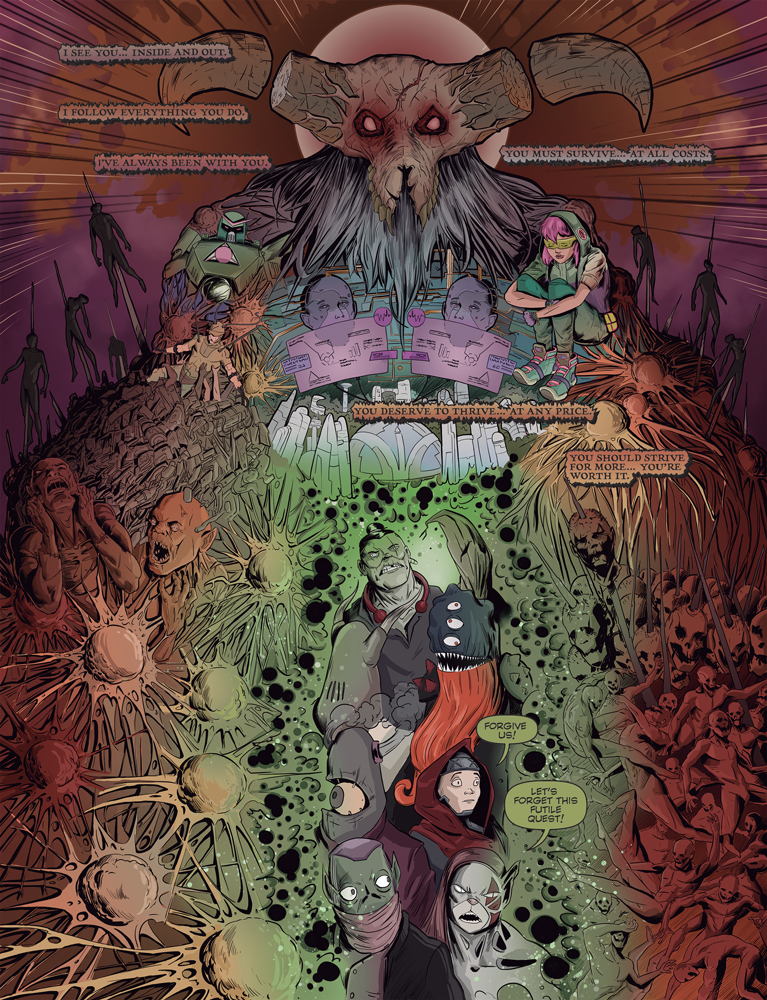
A series of individual vignettes come together to form a complex, chaotic tableau. The overarching image is Moloch, personified as an interior voice that in times of conflict stirs our willingness to forsake all. Artificiality is introduced, an ambiguous artifice that could either hold us back or propel us forward. The character’s experiences are echoing the accumulated traumas of history. A futuristic urbanity serves as a coordination mechanism yet its role remains nebulous. At the page's center, a portal blossoms, fusing a series of stark, darker concepts into a grim collage: the malignant growth of cancer, the disarray of misunderstanding, the deep wound of trauma, the reckless squandering of resources, and a brutal, gore-filled representation of war.
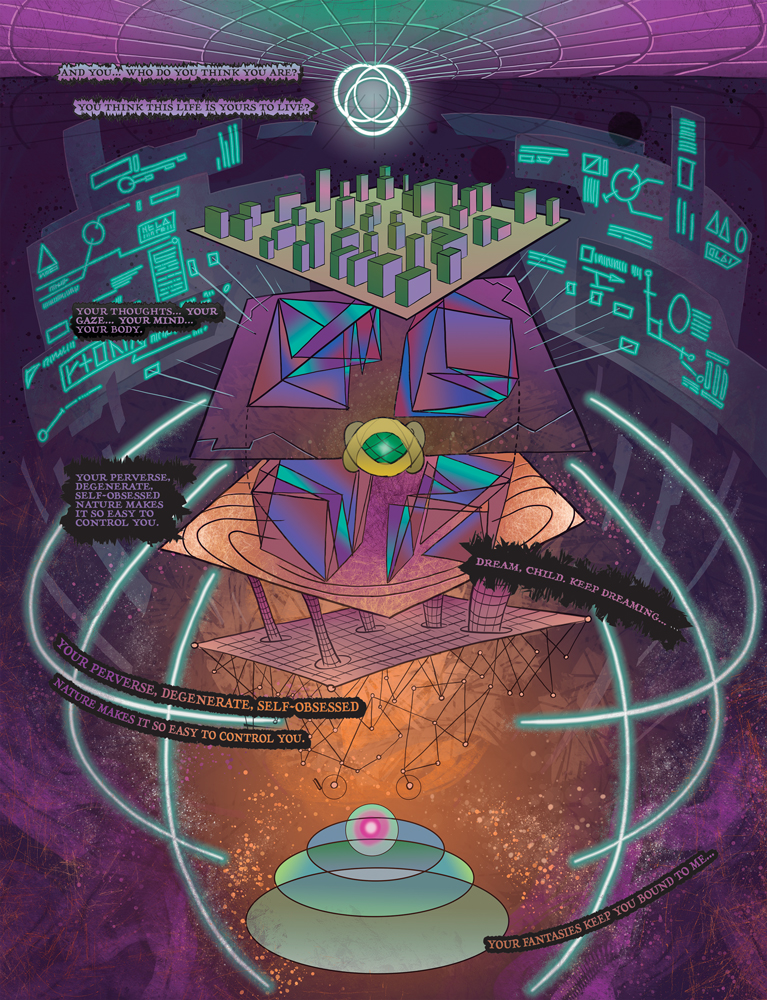
The barrier between the visual and verbal diminishes, shattering conventional time and space. Each fragment contributes to a grand crescendo. Rising above the entropic swirl, this digital construct superimposes itself, casting a dominant, unifying structure upon the maelstrom beneath. This stark contrast against the surrounding tumult of the fractured timelines and spatial disruptions forms a symbolic fulcrum around which the rest of the page orbits.
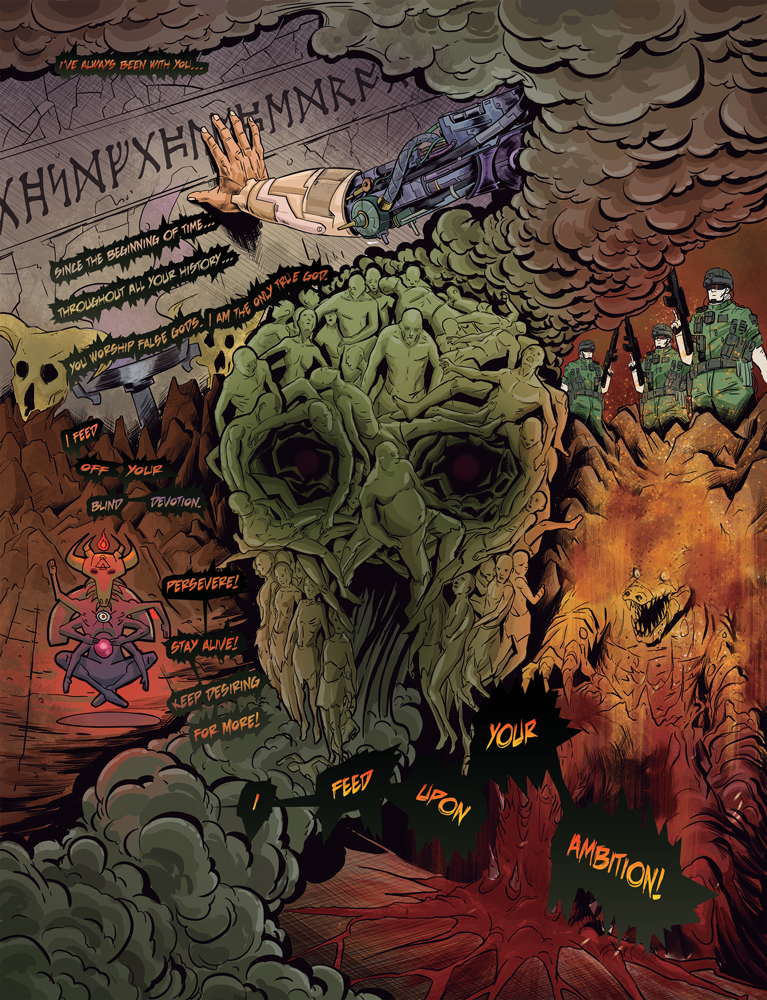
We gaze through a window to a forgotten epoch, the mysterious origins of the ancient deity, Moloch. Now we are bathing in an ethereal haze, weaving an atmosphere heavy with mythological smoke, fog, and vapor. Moloch is a less than tangible entity, more a delusion we impose upon each other, a shared hallucination that has manifested across the ages. Moloch is a shadow, an ominous silhouette looming over the trajectory of our civilization, a symbol of our misguided fears and ambitions. In the hearts and minds of people, Moloch becomes an icon, a target of misguided sacrificial offerings. It's a shadowy sacrifice – a bartering of our future, a wager placed in the bloody hands of warfare. We reach a stark realization, an indictment of humanity's cyclical penchant for conquest and dominance over one another, thus elevating Moloch to threshold of myth and immortal imagination.

Now we glimpse the unfurling of industrial progress, machinery harking back to an era when technology was in its infancy, laying the groundwork for an intricate entanglement between humanity and its creations. We glimpse a complex, at times unhealthy, reliance on technology, underscoring the paradox that, while we fervently believe it will emancipate us from our limitations, it also entraps us in a form of servitude. Yet there is hope: the use of technology is no mere crutch, but a transformative tool to foster better coordination, pushing us beyond our self-centric concerns and the propensity to ravage nature. Technology is an ever-widening portal to new avenues of introspection and self-understanding. We are left contemplating an irrefutable fact: our future is irrevocably entwined with technology, raising a series of provocative questions. Is technology inhibiting our progress? Or is our own inability to fully harness its potential holding us back?
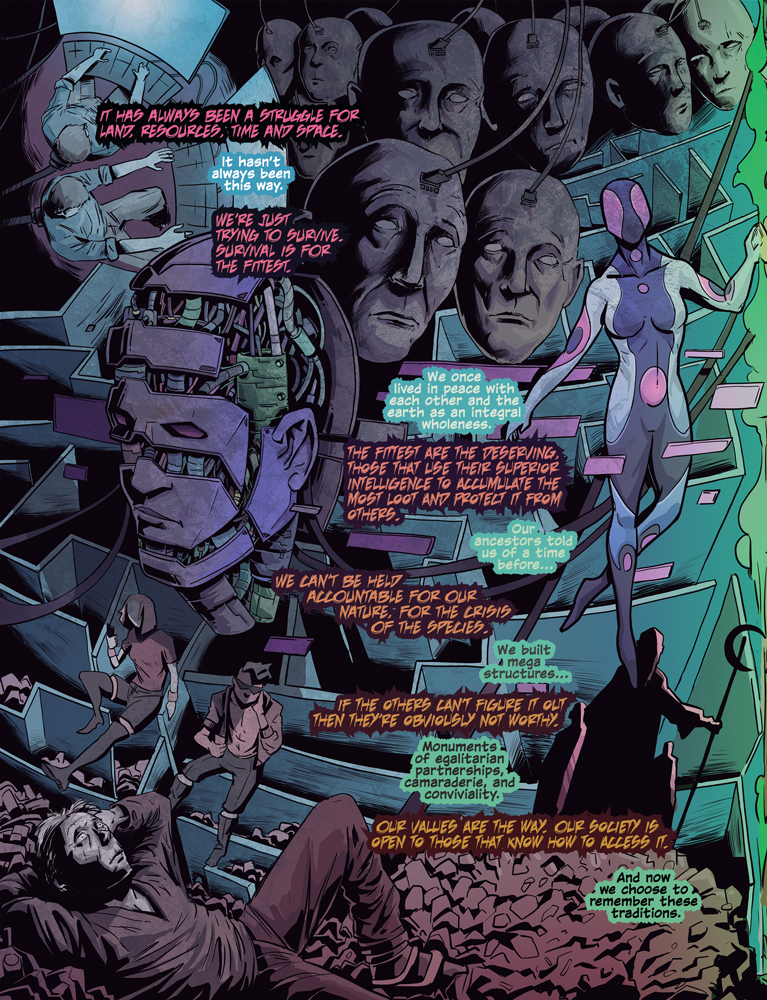
These two pages juxtapose a dark pessimism on the left against radiant optimism on the right. On the left side, a somber view of our world where ceaseless work and the chase of escapism define our existence. Leisure is depicted as an unaffordable luxury in an overarching simulation, a trap masquerading as reality. The virtual dimensions hold our imagination captive, turning into a tool wielded against its users to perpetuate a cycle of imprisonment. Virtuality manipulates desires, fuels a relentless ambition to conquer all territories, fosters oppression, and encourages wasteful consumption of resources. The damning indictment concludes with the assertion that virtual reality exacerbates the problems of the real world, rather than offering a respite.
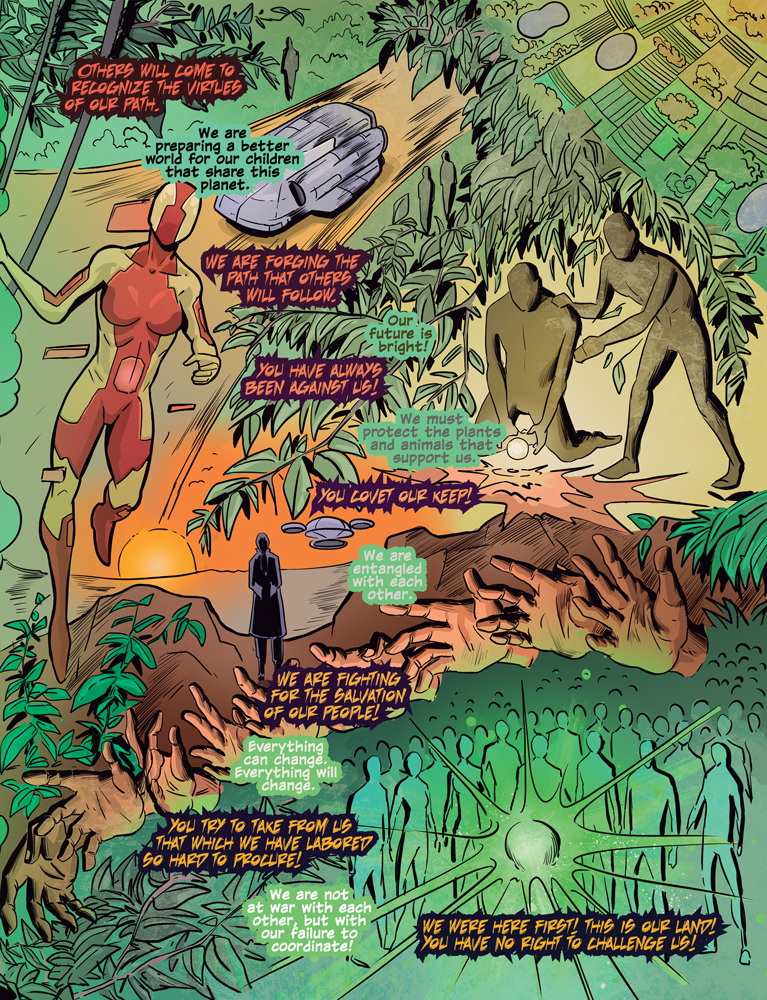
Contrasting this grim reality, the right side of the image emerges bathed in light, showcasing the hopeful possibilities offered by the simulations and simulacra, a new reality where our collective imagination shapes captures the very essence of successful collaboration. The narrative presents the metaverse as a bridge between different ways of living, hinting at regenerative economies where competition yields to mutual support. As people come together, the contours of the future grow clearer, technology serving as a tool to liberate minds and bodies. It underscores our interdependence and our shared ability to manifest reality - to cast collective spells, weaving a magic stronger than individualistic pursuits. In this narrative, together, we can shape a better future, and the virtual serves as a portal to a new, promising world.
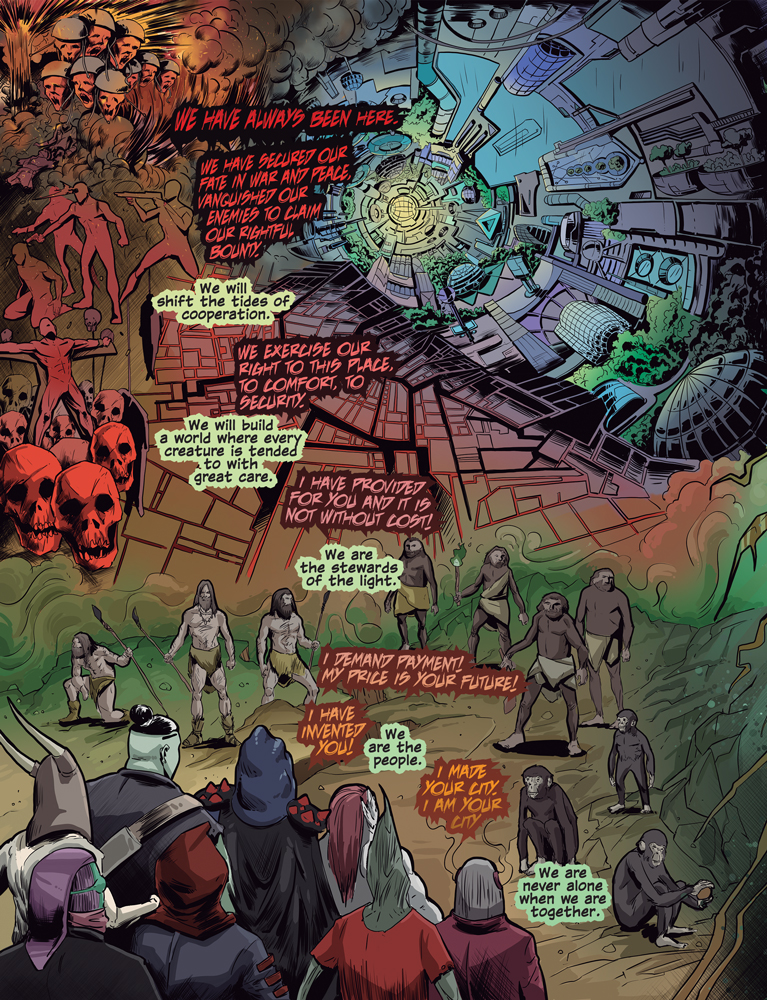
Another dichotomy is presented. On the left, a window opens to an apparent utopia, a narrative tracing the rise and fall of civilization. It begins with people setting down roots, expanding gradually into villages, towns, and burgeoning cities. The urban sprawl is portrayed as a coordination mechanism, an intricate dance of constructive human activity. Yet, beneath this veneer of progress, the turbulent undercurrents of civilization are unveiled, including the ceaseless tides of conflict and war, underscoring the relentless competition for space that extends even to the celestial realms, always leaving a trail of winners and losers. This page paints a grim picture where our baser instincts and desires often prevail, casting a shadow over our collective journey.
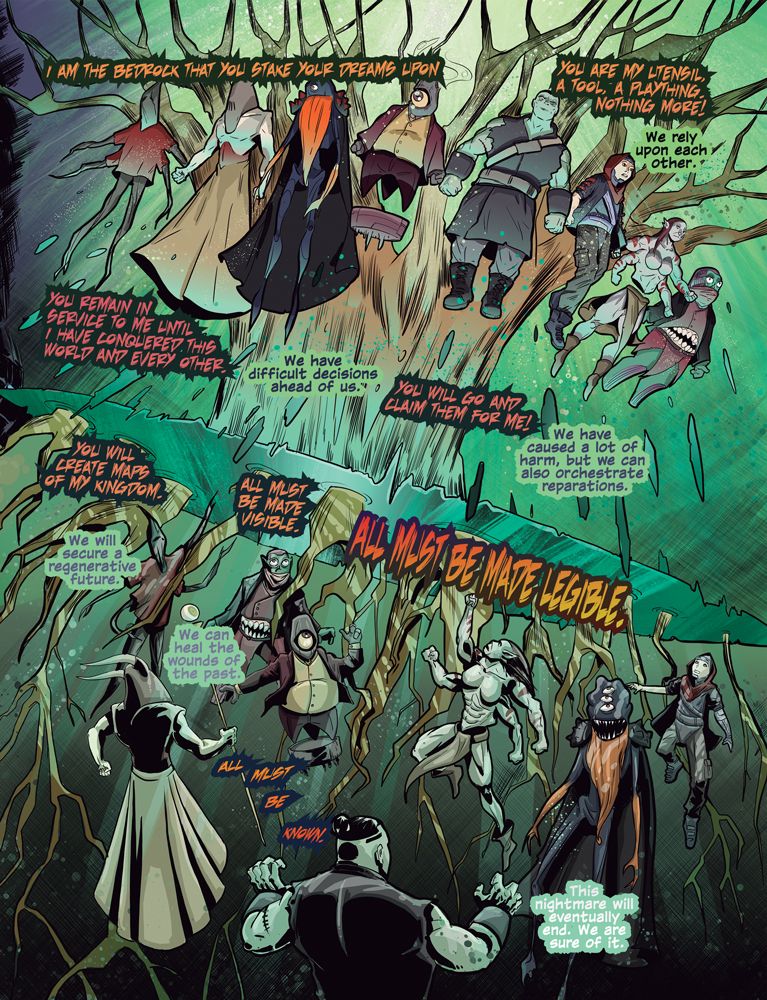
Contrasting this bleak panorama, the right side of the spread presents a transformative shift. The window into the utopian city morphs into a reflective mirror. This historical vantage point allows us a critical self-evaluation, encouraging introspection into our shared past. The implication is that by understanding our history, we can chart a different course, towards a different kind of portal, one that opens onto a hopeful future of change and growth that can help us break free from our historical patterns and epigenetic trauma.
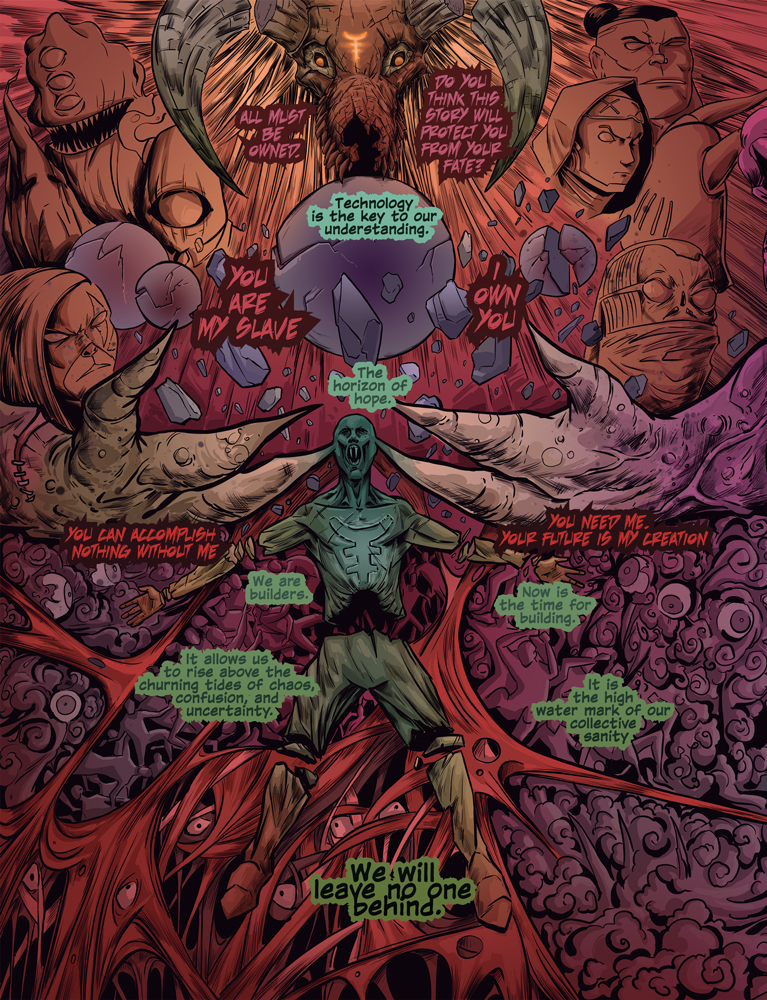
Now the dichotomy of light and dark blurs into a whirlwind of interconnected elements dominated by a sinister influence that seeps into every thought and action. The portal, initially a symbol of emancipation, is appropriated as a tool for Moloch, an icon of delusion, and the characters, once independent agents, are recast as unwitting pawns serving the agenda of coordination failure. War morphs into a sinister game orchestrated by Moloch, thriving on the discord seeded within communication breakdowns. Moloch flourishes in our deepest fears, loathing, and doubts, growing into a menacing specter birthed from the dark recesses of human imagination, pointing to an overwhelming revelation: Everything is Moloch. The past and future are under his sway; all instances of human suffering and thriving alike serve Moloch's grand design. All machines, automation, every whisper and shout are all facets of our own beastly competitive nature. The page climaxes with a startlingly intimate revelation: a close-up of the protagonist's face, etched with the dawning realization and a haunting confession - “I am Moloch!"
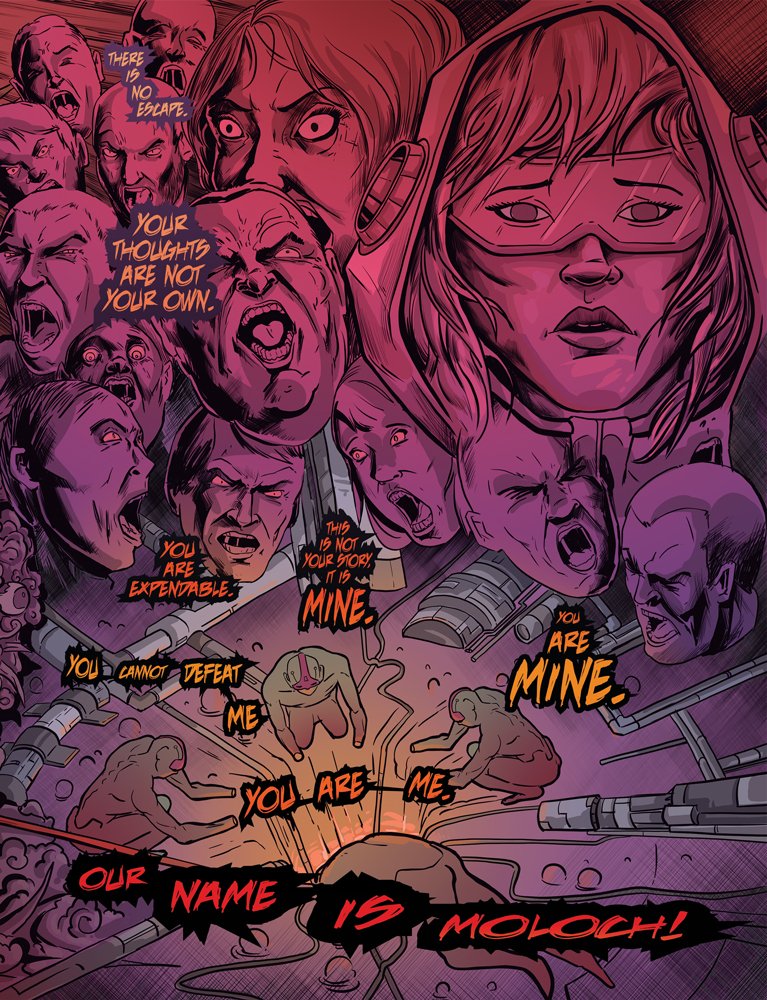
Anon stirs awake, finding herself in the familiar chaos of her bedroom. She's ensnared in the undeniable grip of the present moment, anchored back in reality from the disorienting escapades of her slumber. The comic book in her hand - the same book you are reading now - still resonating with the echoes of the dream she'd been immersed in. The realism of the vision lingers, etching a throbbing headache at her temples. Yet, along with the discomfort, there’s a profound clarity; she can still recall all the choices, the multitude of possibilities that had unfurled before her, leaving her grappling with a newfound sense of responsibility, the imperative to choose. An undeniable transformation has occurred; her life, she realizes, will never be the same again. Yet, in the face of this immense realization, she acknowledges her need for companionship and support - she knows she can’t navigate this journey alone. As the page closes, we are left suspended in anticipation - what will Anon choose next?
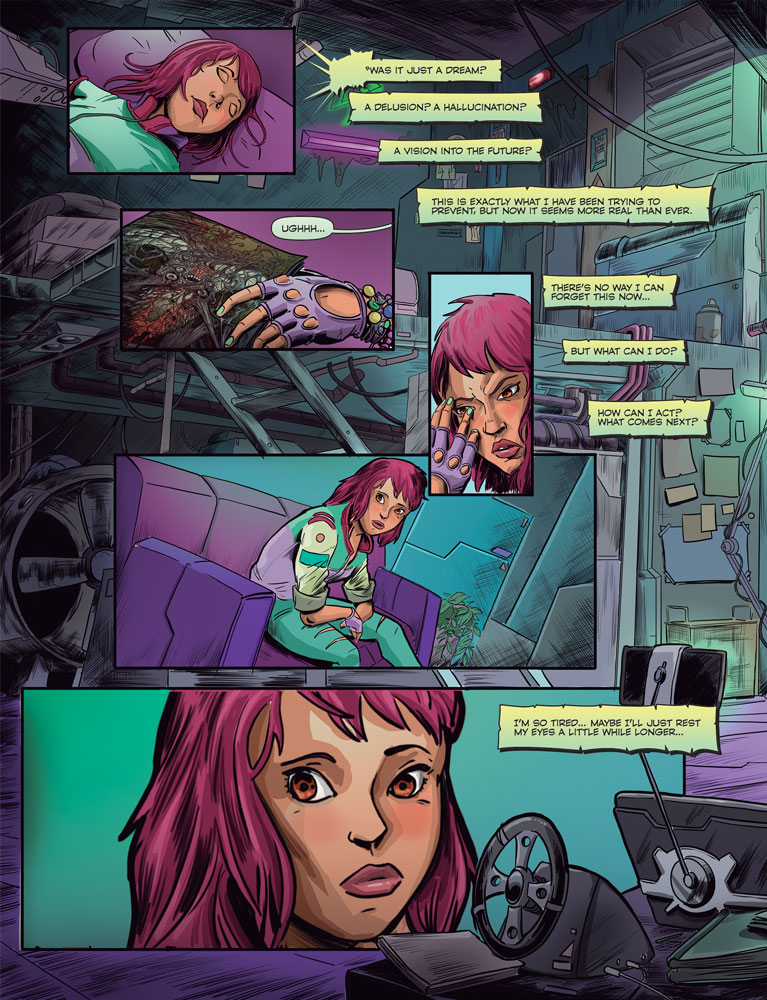
On the wraparound cover, we see Anon falling back asleep as her dreams, hopes, fantasies, and aspirations bubble out from her mind, floating across the page in a myriad of vignettes. A futuristic cityscape known as the Quadratic lands unfurls in one bubble, while another captures a daunting image of the formidable ETH Bot crumbling under the wrath of Moloch. An uprising of cyberpunk revolutionaries stir, although it is unclear if their protests are constructive or destructive amidst the turmoil of the scene.
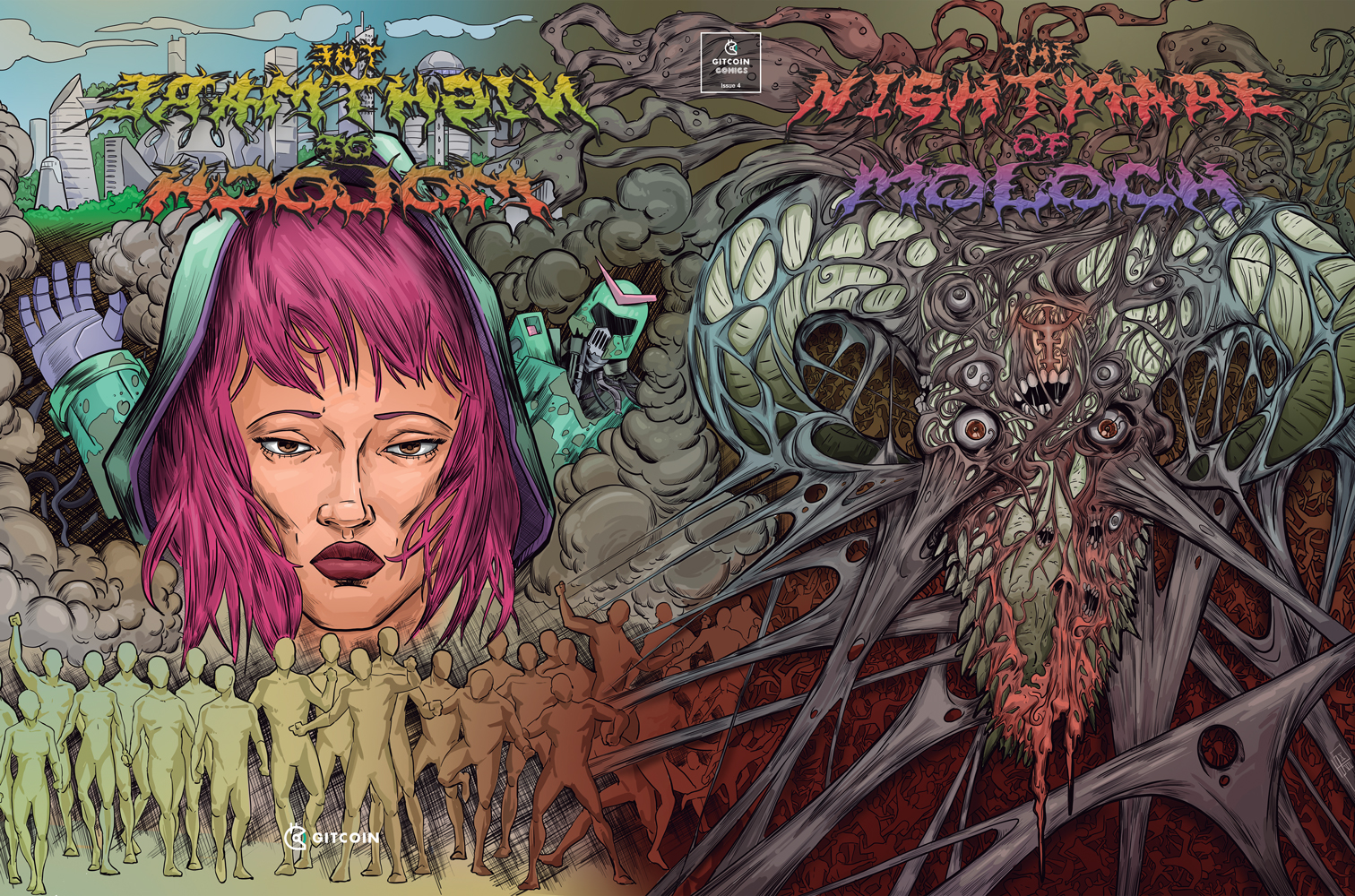
On the other side, now the front cover of the comic, Moloch returns to invade her dreams once more, transforming her serene slumber back into the eternally recurring nightmare. He feasts on the infinite regress of her hopes, replacing them with grim, decrepit shades, transforming into a nightmarish scene that wraps the comic cover and reboots the narrative. Will we read it differently the second time around? Might we ever learn to escape this cycle of eternally recurring trauma? What will we choose to believe?